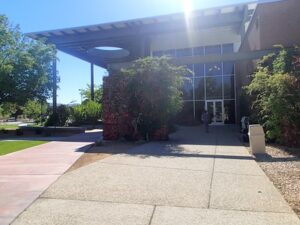New analysis of the research on free college programs shows that program outcomes are pretty much a mixed bag. The impact of these programs depends heavily on whether they apply broadly – at the state level – or locally, as in the “Kalamazoo Promise.” Additional effects may (or may not) be seen among programs that offer four-year tuition guarantees and two-year tuition guarantees.
Researcher David Monaghan, a professor at Shippensburg University in Pennsylvania, examined nearly 100 studies on the impacts of tuition-guarantee programs. One of the most closely studied programs – at least initially – was the Kalamazoo Promise program, which guaranteed full tuition costs for any student enrolled in the Kalamazoo Public School system from grades K-12. Students who attended for fewer than 13 years receive a pro-rated tuition guarantee.
With regard to the Kalamazoo Promise, the program reduced the number of students transferring out of the school district, which in turn generated more per-pupil funding for the district from the state. In that regard, it has been good for the local K-12 school district. The program has increased the number of students enrolling in four-year, public institutions, and has slightly increased the graduation rate among eligible students. Further, it has drawn students away from community colleges in the area and into four-year universities.
Other free college programs focus on enrolling students in two-year institutions and rely heavily on other aid mechanisms, like Pell Grants to absorb the initial costs of attendance. These “last-dollar” programs may have no impact at all on disadvantaged students. This is because Pell Grants may provide sufficient funding for low-income students to attend two-year programs at no cost. The last-dollar effect may be reserved for students from more affluent households.
Free college programs can limit attainment
One effect of free community college programs is that they may draw students away from four year institutions altogether. Students may enroll in a community college with the intention of transferring to a four-year program but may never actually make it there. The author did point out that many statewide community college programs found the highest initial support among Republican-led state legislatures. It’s unlikely that limiting educational attainment is an unstated goal of these programs. Ultimately, students tend to enroll where they can maximize their grant aid while minimizing their own out-of-pocket costs. For some participants, this will mean exchanging a potentially pricey four-year education for a free two-year education.
Unfortunately, the studies don’t show consistent outcomes for these programs. They may or may not boost enrollment, persistence, completion, income, or noticeable economic benefits among program participants. Some of the confusion results from the rigor (or lack thereof) of the studies themselves. In other cases, the results of similar programs are just different.
While the jury is still out on free college programs, to date they have registered little evidence of large-scale benefits for participants.
Photo Credit: Josh Mazgelis, via Flickr



















